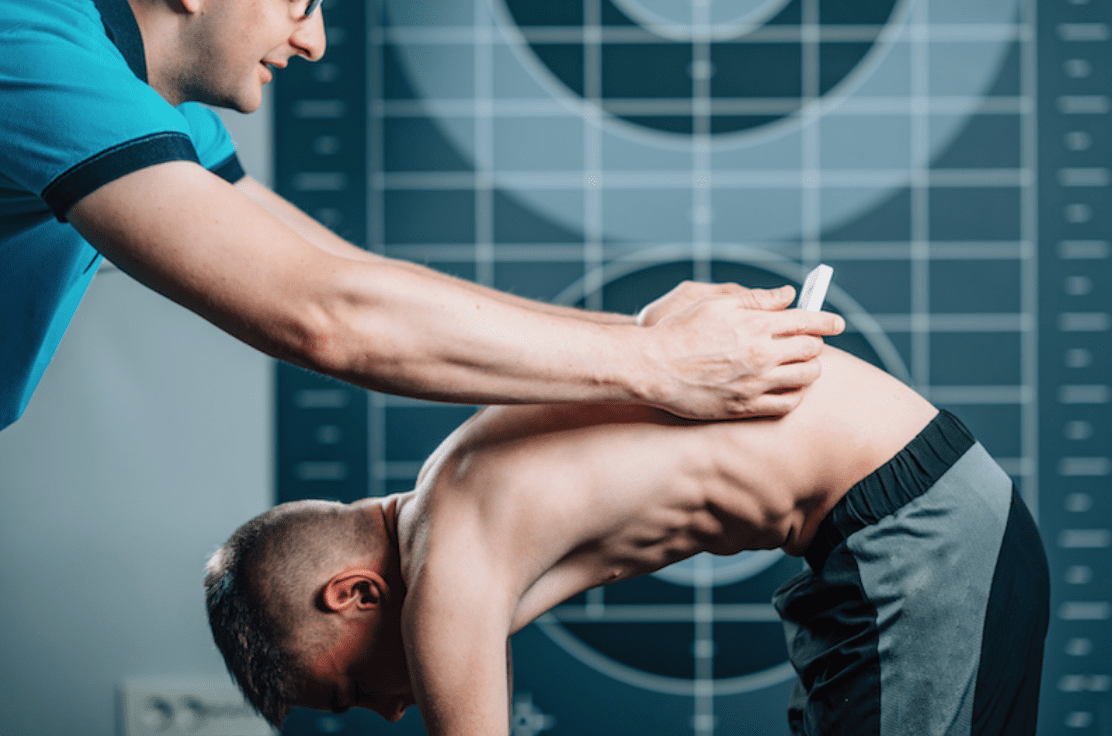
It’s fall, the kids are back in school, and for some it will be time to get their scoliosis screening. You likely know that scoliosis is a kind of spinal deformity, and you may even know a kid who wears a brace because of it. But you may wonder, Why are kids screened when they are? and What does it really mean if my kid has scoliosis?
In Texas, the screening that is done in schools is called a Spinal Screening and scoliosis is not the only spinal deformity they can find, but it is the most common by far. According to the National Scoliosis Foundation, 2-3 percent of Americans have scoliosis–that’s about 7 million people.
The term scoliosis simply refers to a sideways bend in the spine, forming an S or C curve. Any number of things can cause the spine to curve this way: a birth defect, an accident, age-related changes to the spine. But the most common type of scoliosis (85% of cases), and the one that these screens are designed to look for, has no known cause. It’s called idiopathic adolescent scoliosis.
This type of scoliosis is most commonly diagnosed near puberty between the ages of 10-15 in both boys and girls. Girls, however, are eight times more likely to develop a more severe case of scoliosis.
Because girls go into puberty earlier than boys, the recommended age of screening is also a little different for boys and girls. The Texas Department of State Health Services has issued the following school screening schedule:
- Girls will be screened two times, once at age 10 (or fall semester of grade 5) and again at age 12 (or fall semester of grade 7).
- Boys will be screened one time at age 13 or 14 (or fall semester of grade 8).
Screenings are done on all school-age kids to pick up cases of scoliosis that might otherwise go unnoticed, either because it is so early in the disease and/or it hasn’t become symptomatic. If a curve is discovered during a screen, the child is then sent to a doctor who will more precisely measure the curve in degrees, usually using an X Ray.
Here is how the American Association of Neurological Surgeons categorizes scoliosis by the degree of curve:
- Greater than 10 degrees = mild
- Greater than 25 to 30 degrees = moderate
- Greater than 45 to 50 degrees = severe
Most cases picked up during school screenings are mild and won’t progress any further, but idiopathic adolescent scoliosis can get much worse as a child’s skeleton matures. In severe cases, it can compromise the heart and lungs, cause significant back pain, and develop into an obvious physical deformity.
While there is no cure for scoliosis, if it is caught early, these problems can be mitigated using bracing, physical therapy, and in the most severe cases surgery. Each year about 30,000 children are given a brace and about 38,000 patients have surgery.
Chances are when your kid goes through their scoliosis screening, you’ll end up having a brief- and-then-forgotten chat on the car ride home. If scoliosis is picked up, however, you will have the chance to seek out medical care that can save you and your child years of hardship.
If your child has back pain, a positive scoliosis screen, or you are simply concerned, call our office for an evaluation today.

